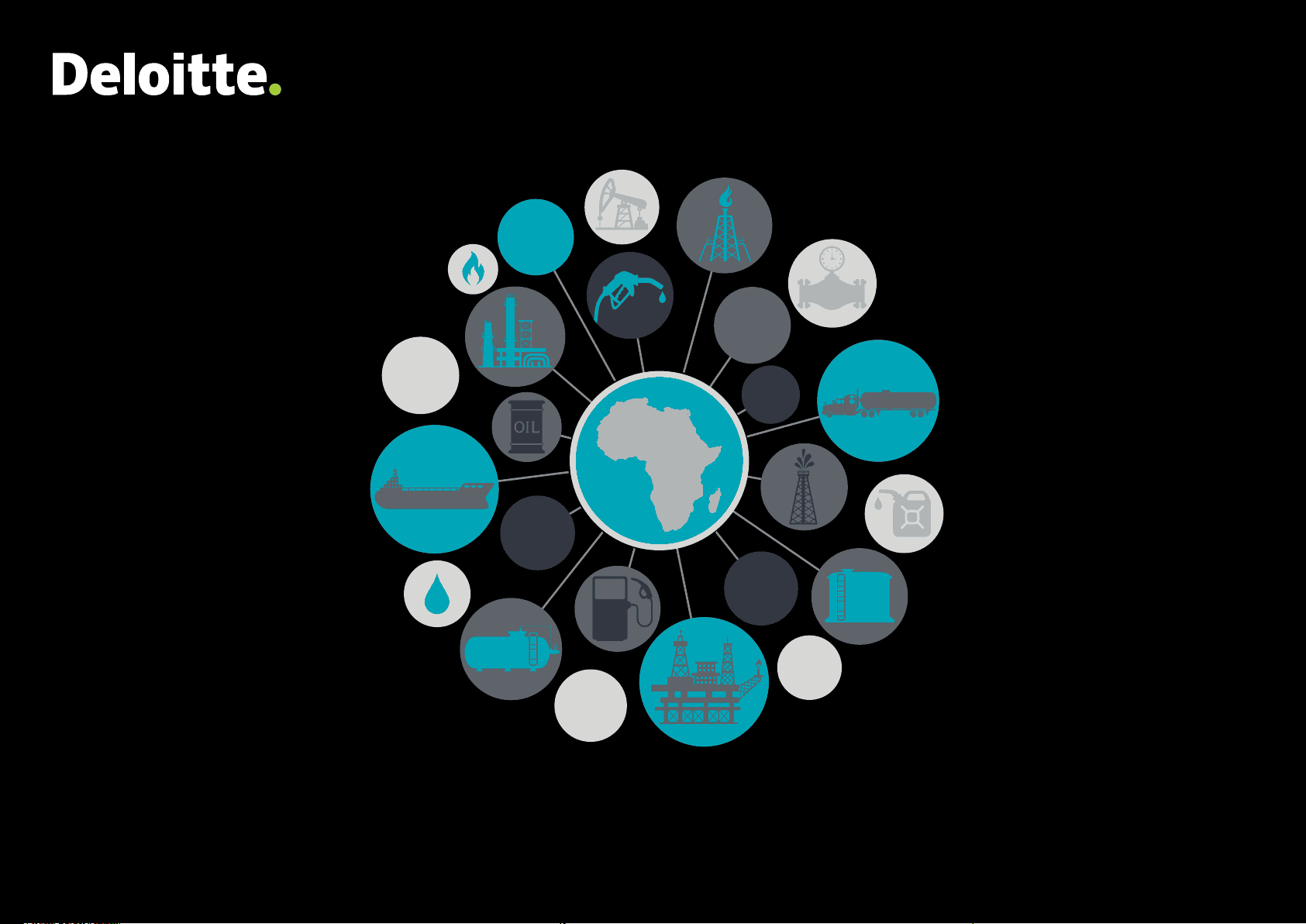
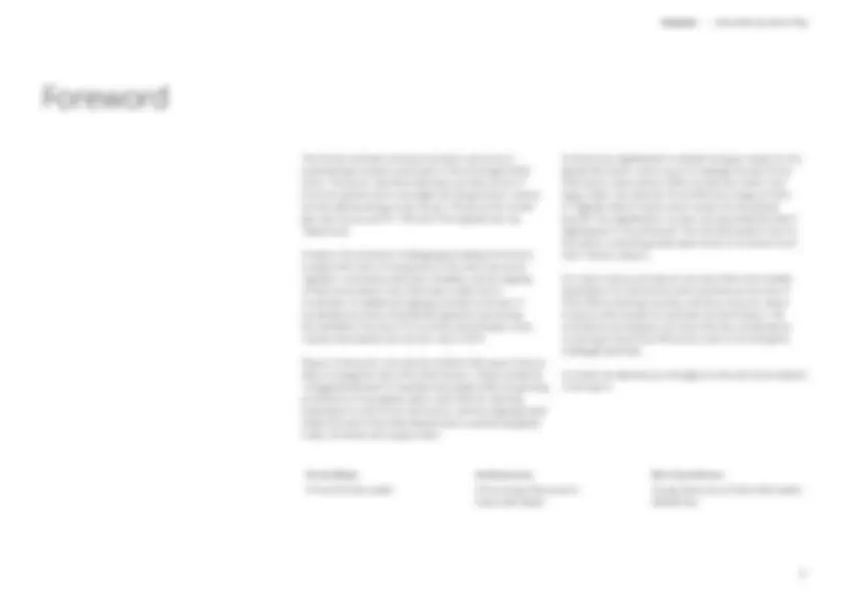
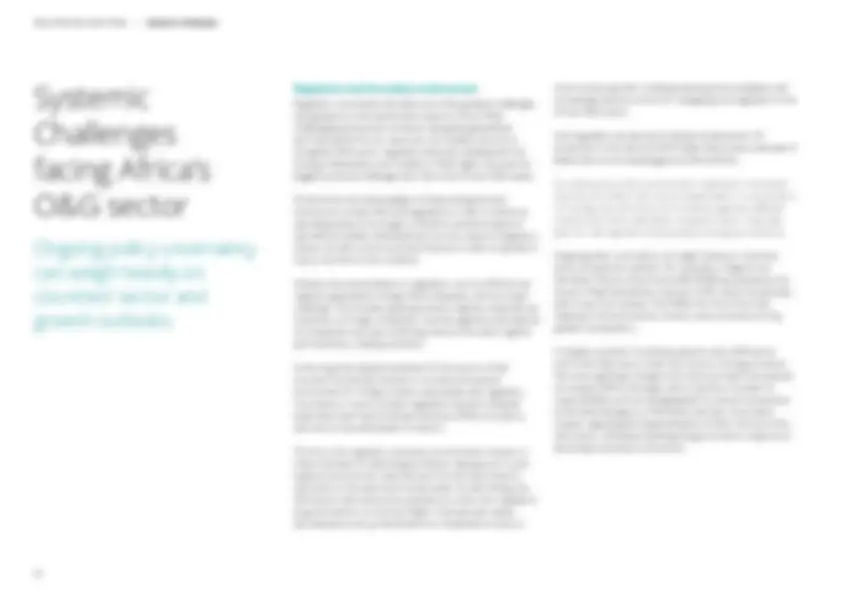
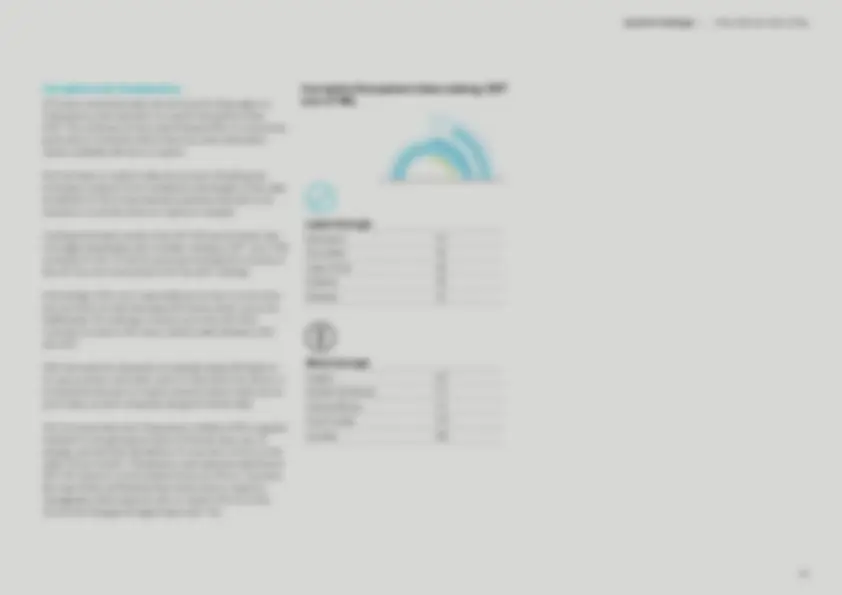
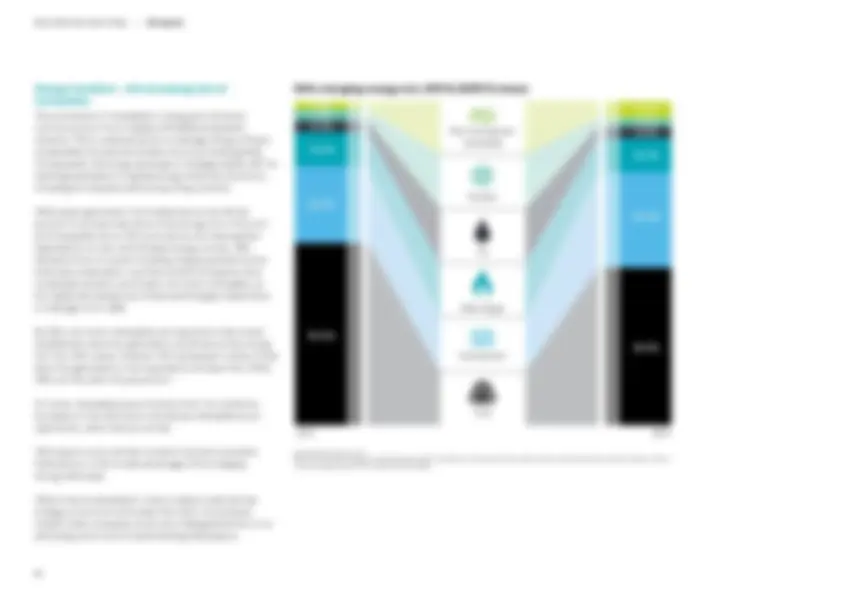
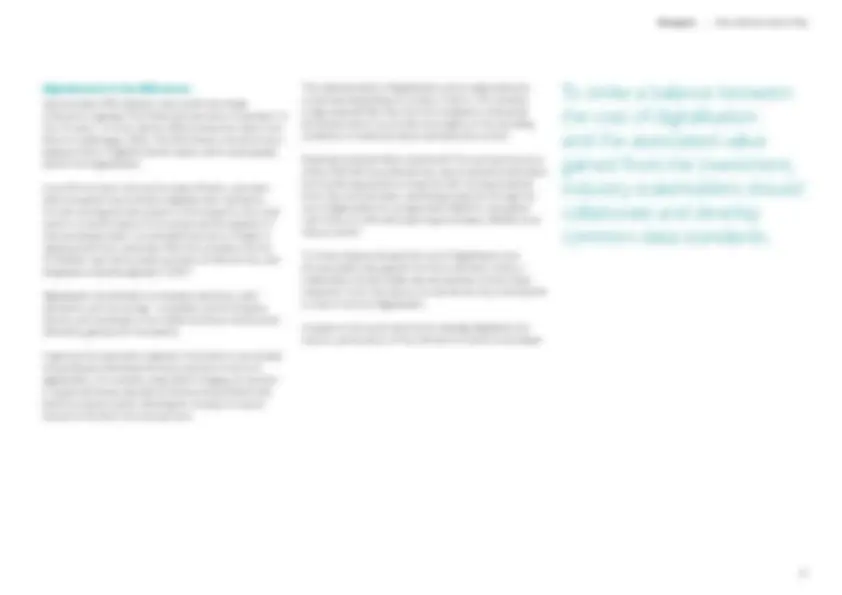
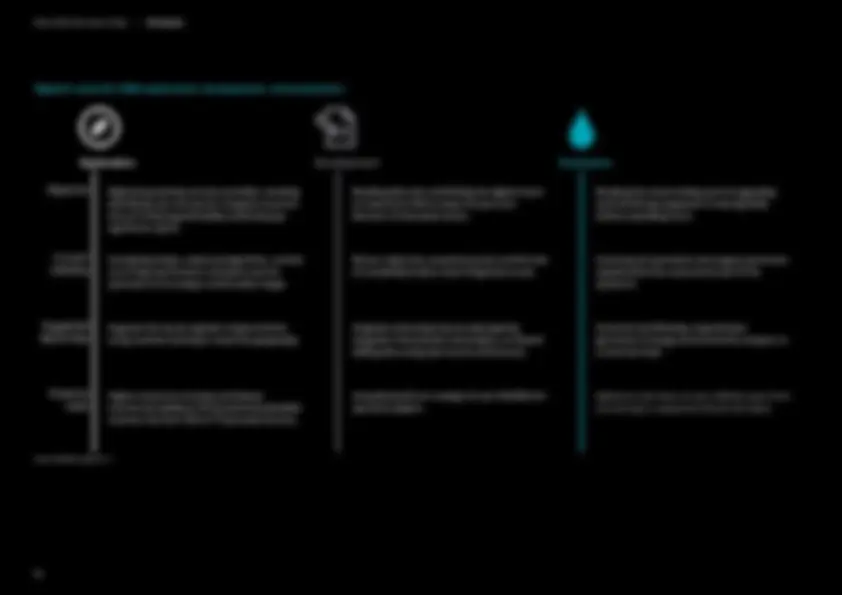
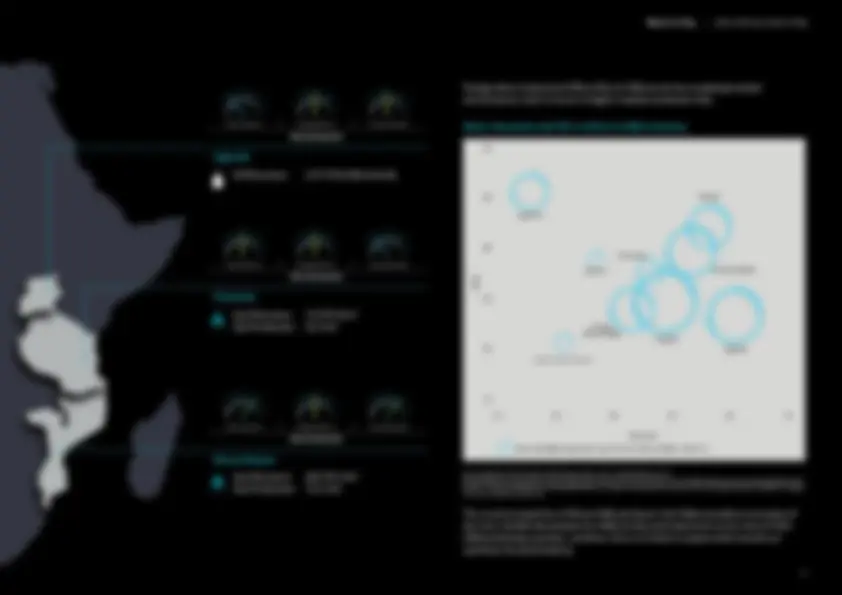
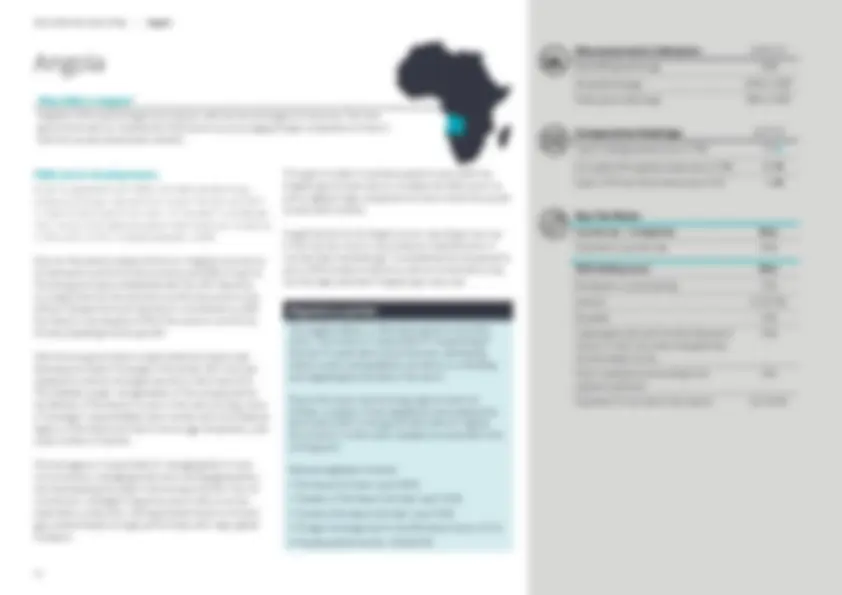
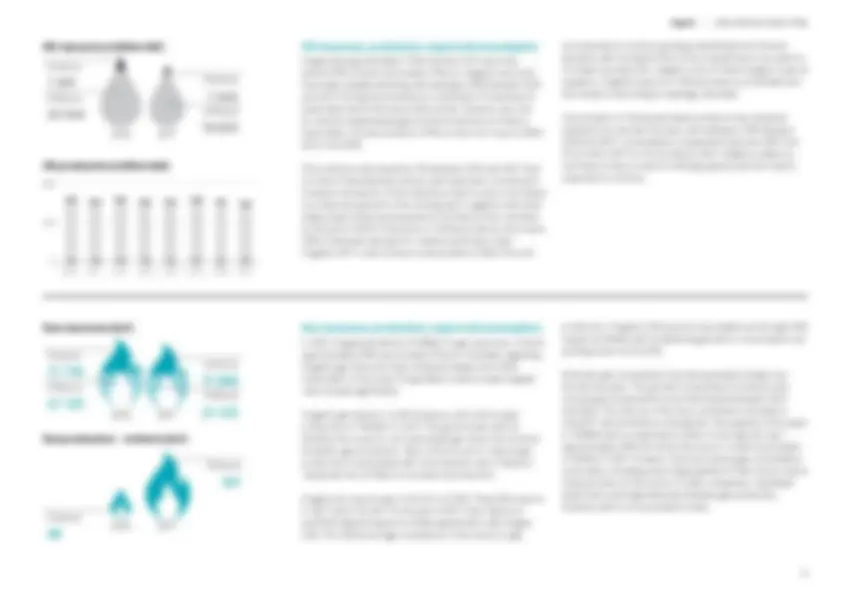
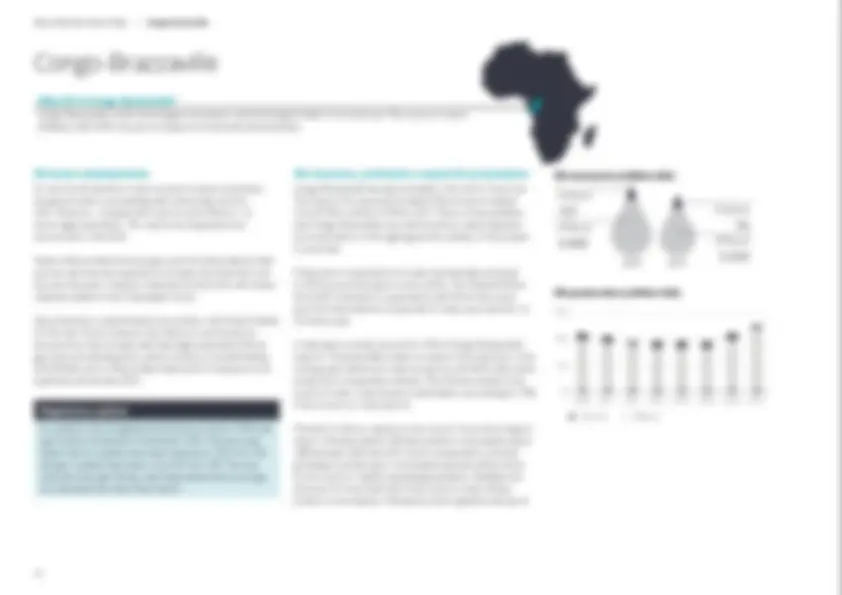
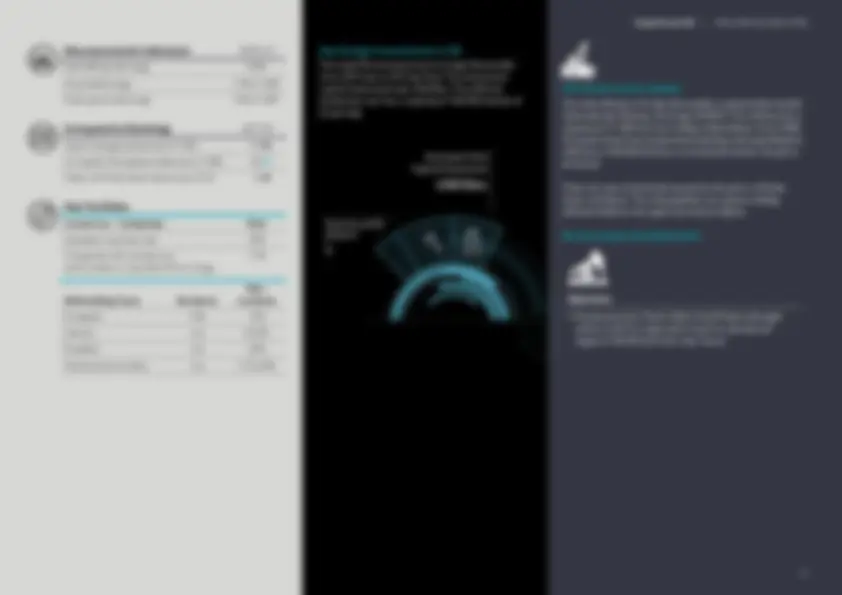
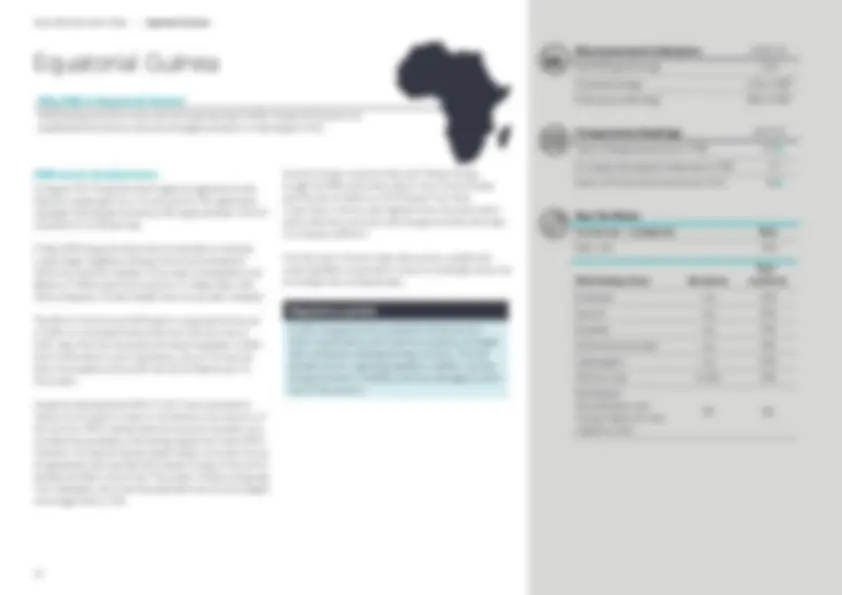
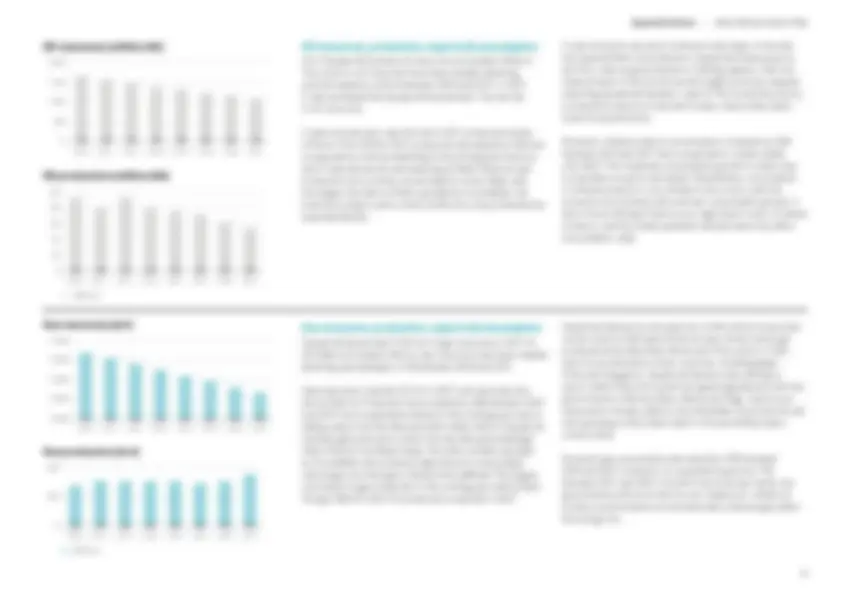
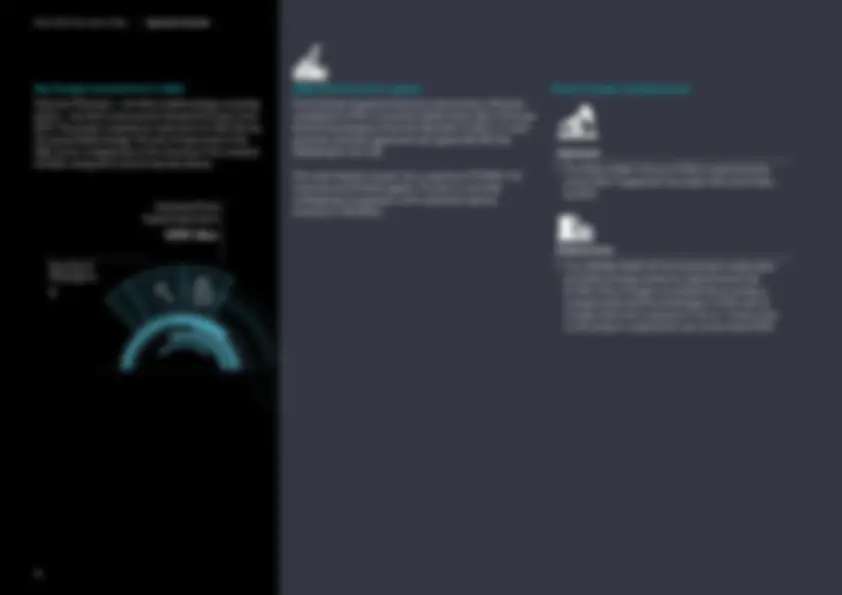
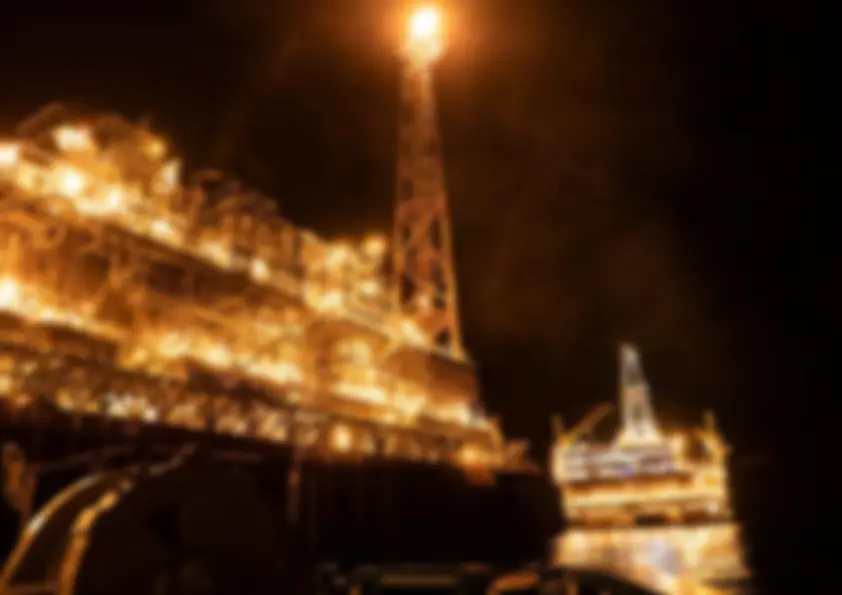
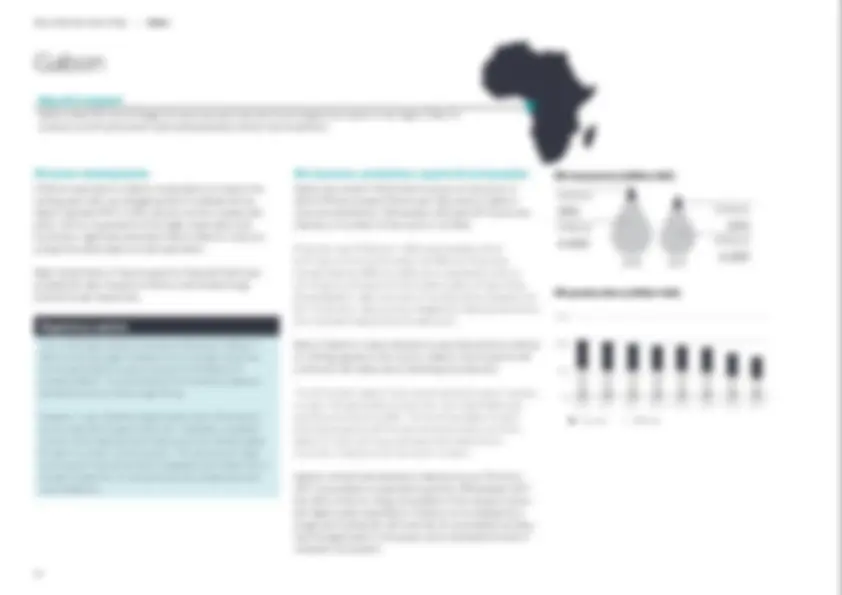
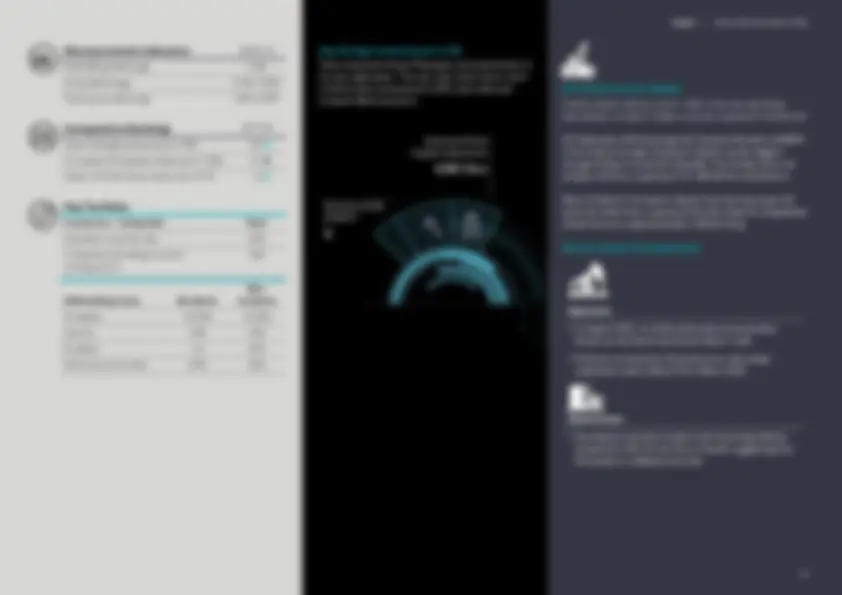
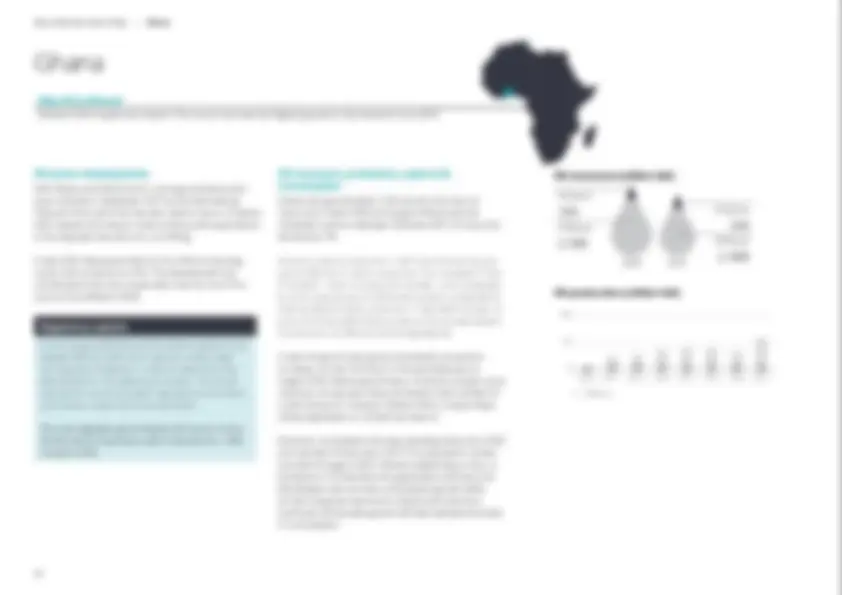
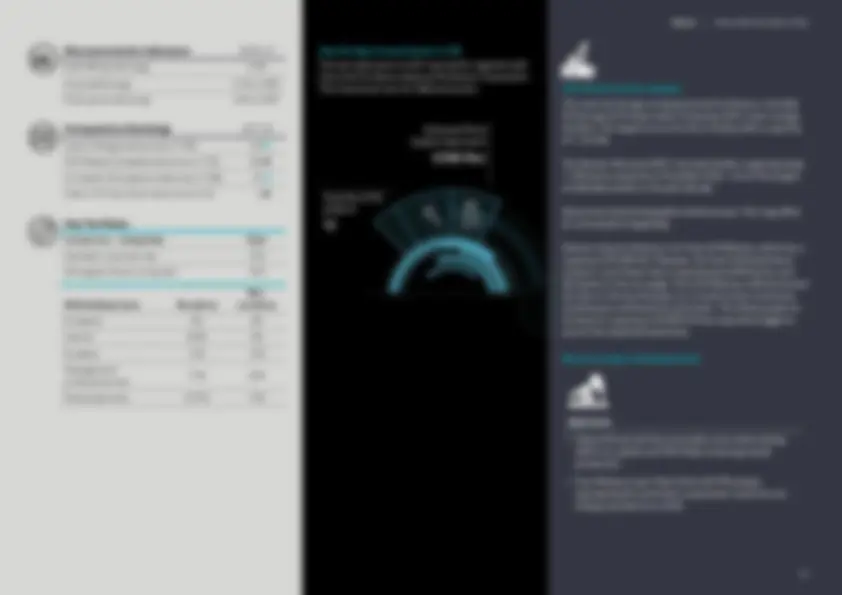
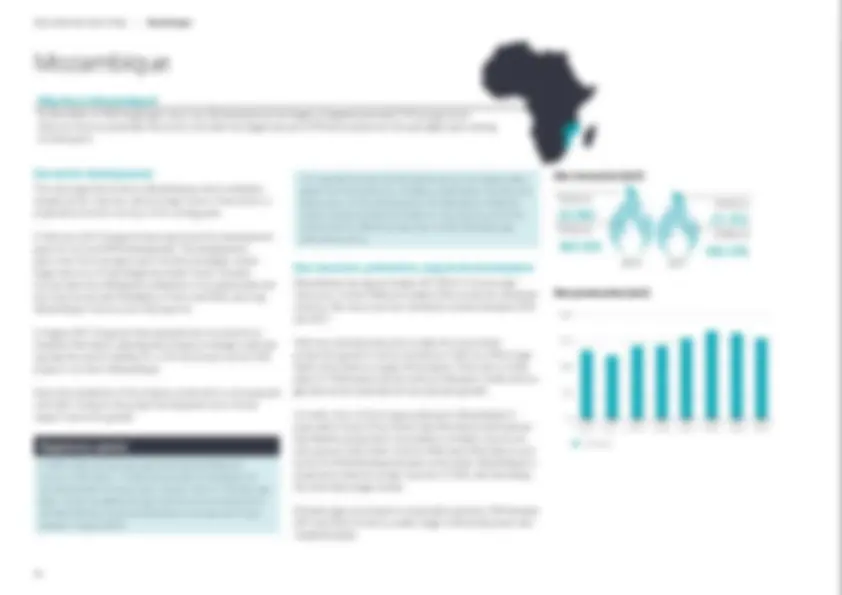
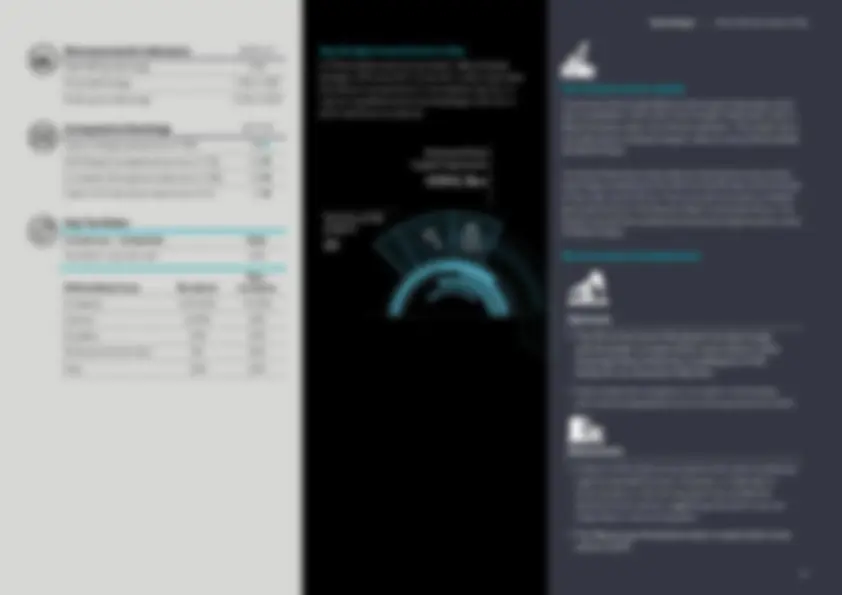
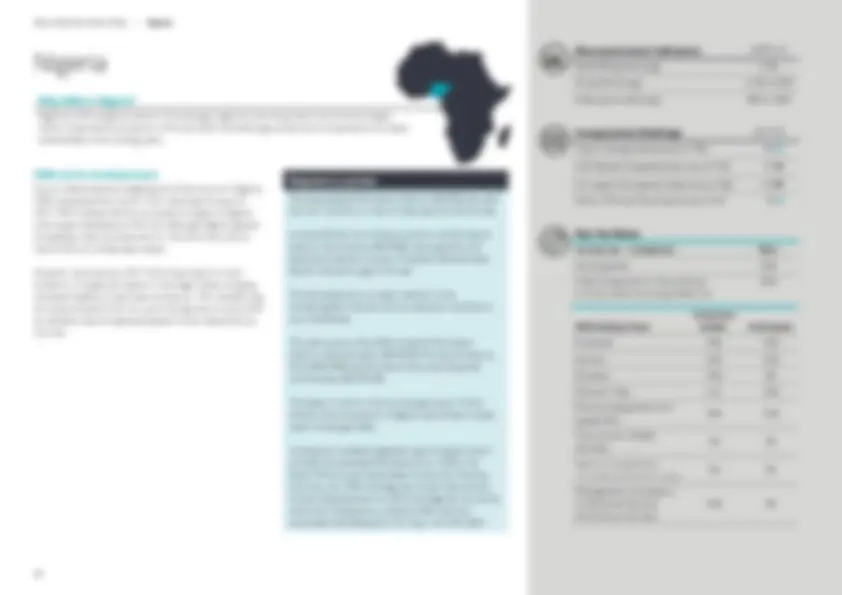
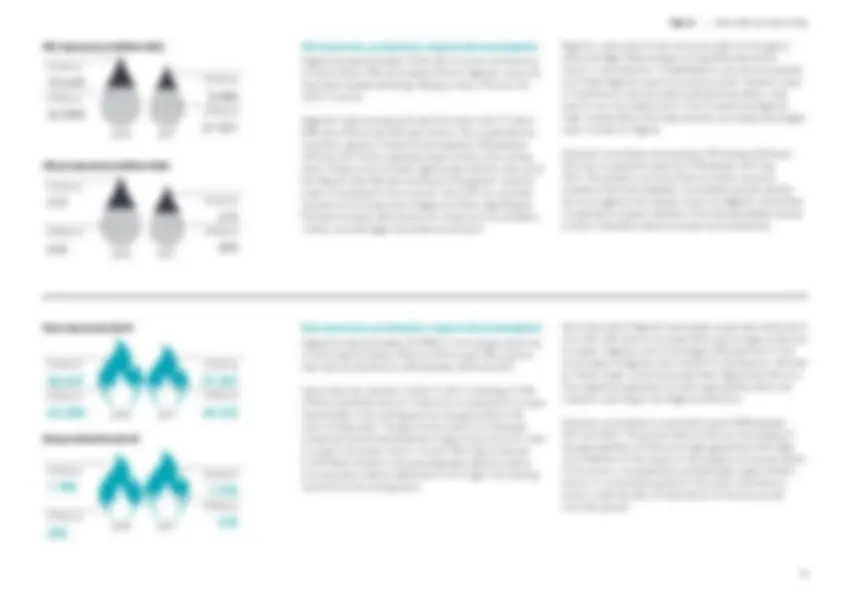
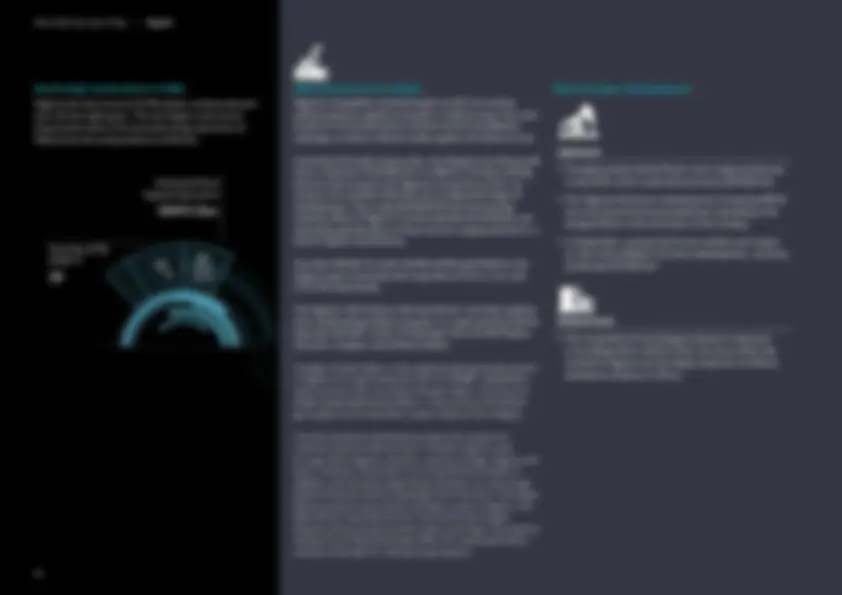

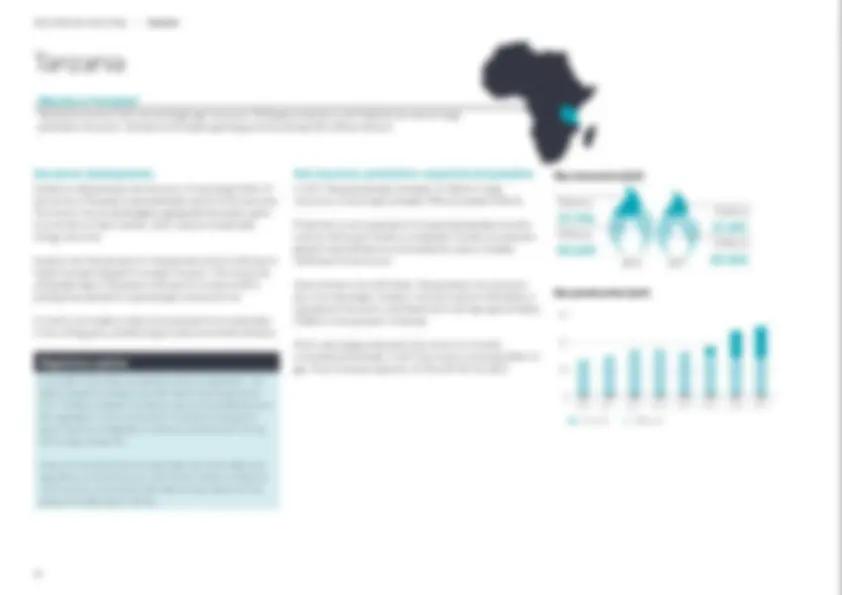
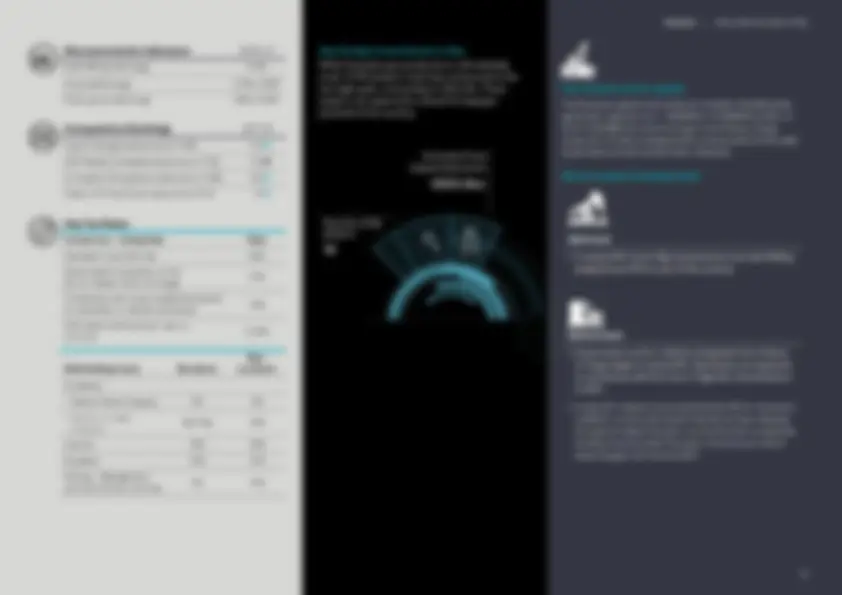
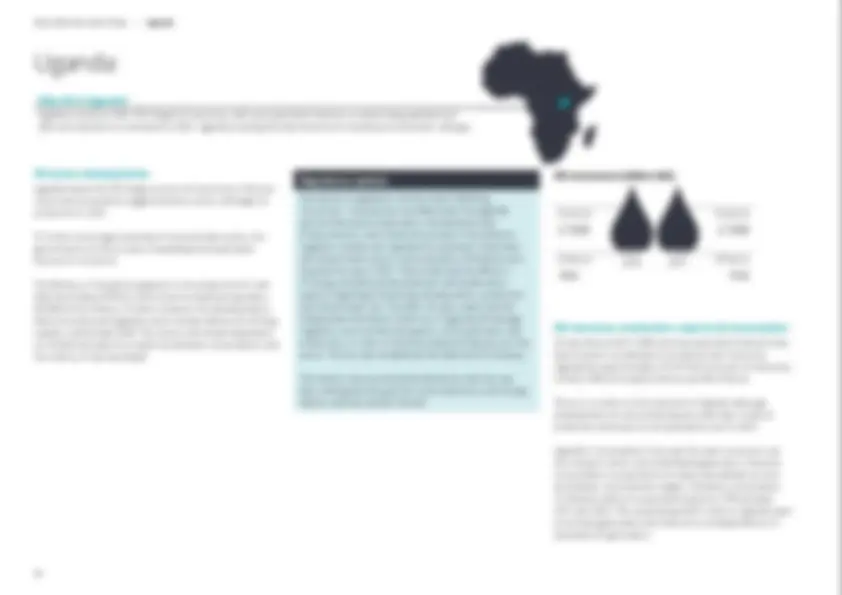
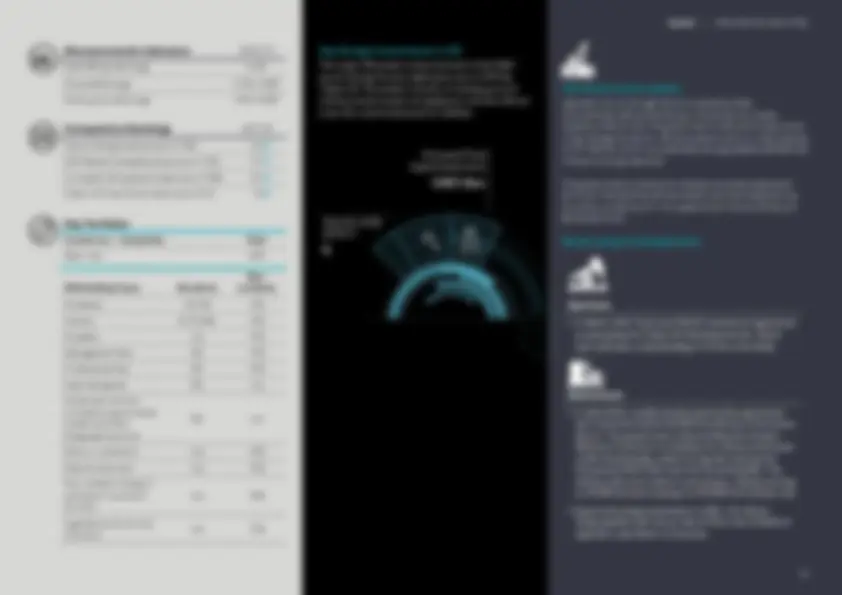
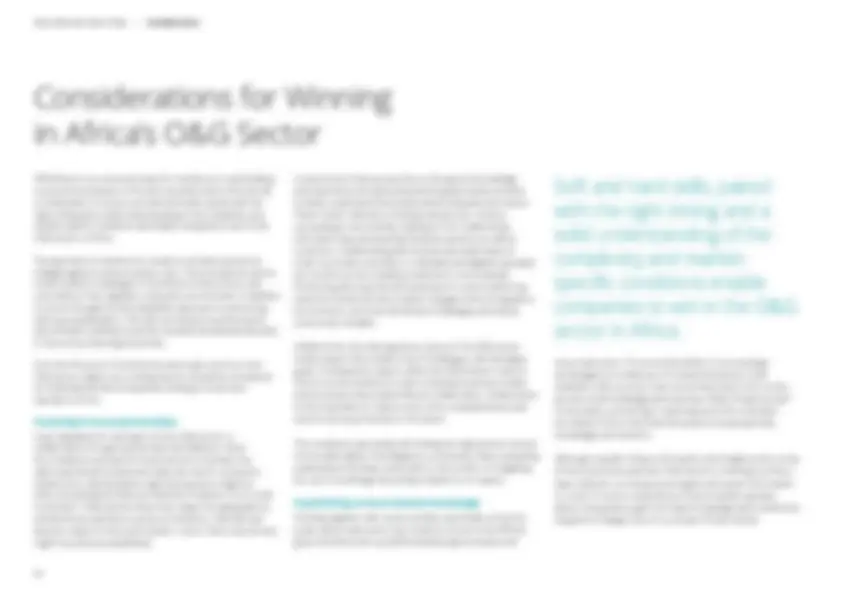

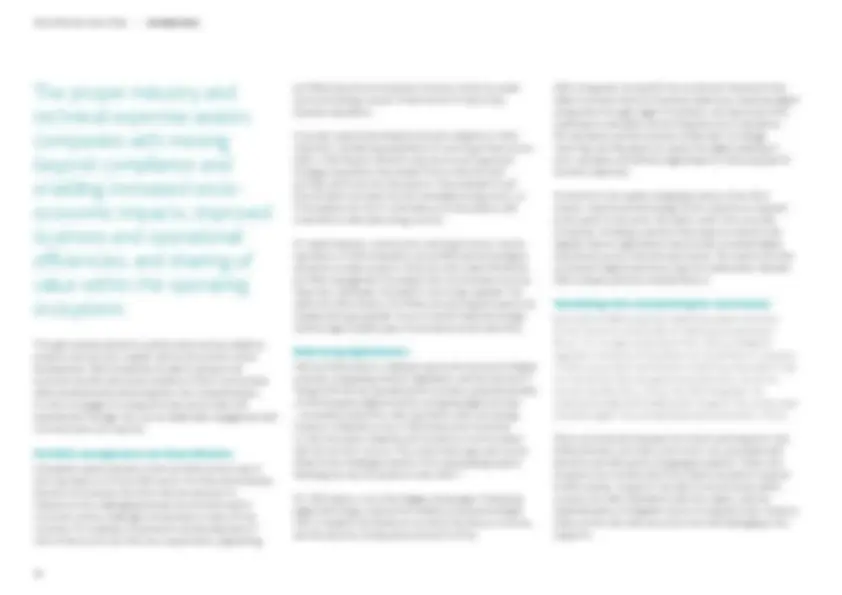

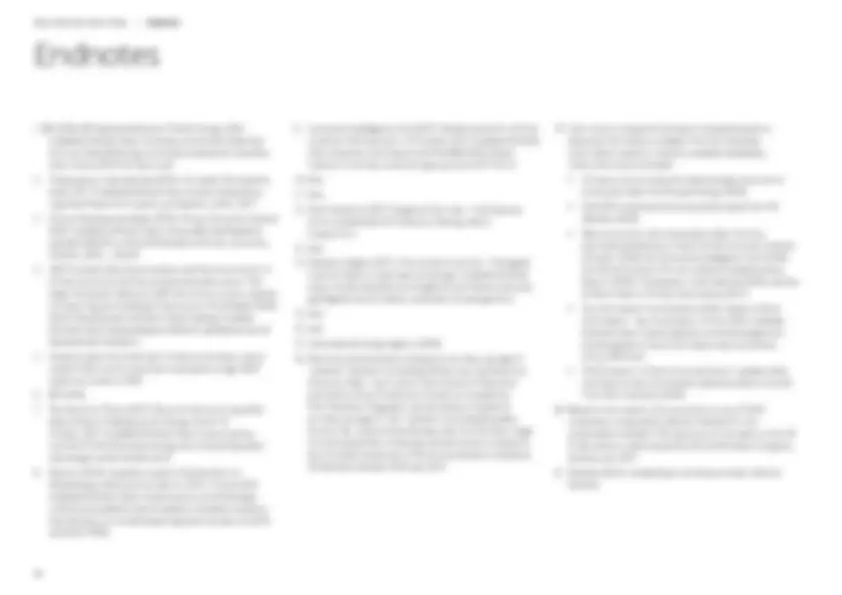

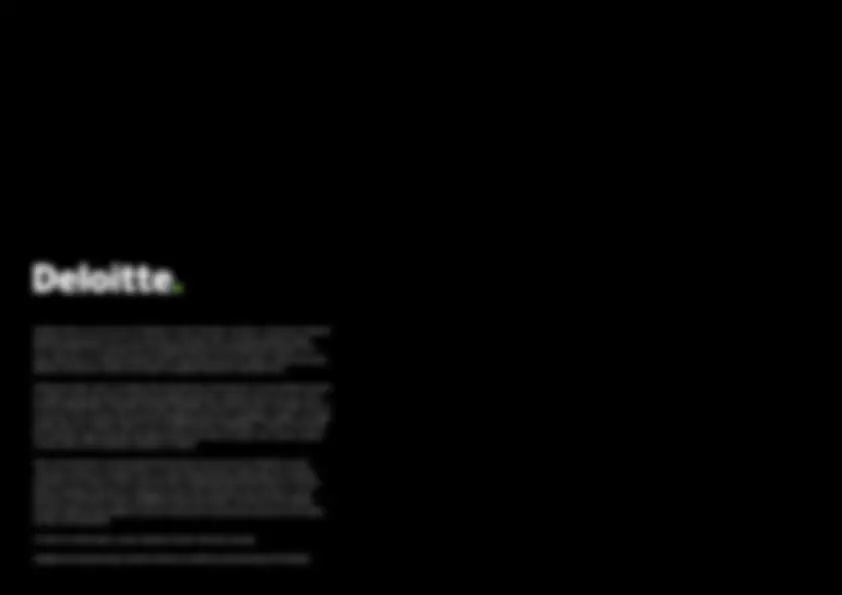


Study with the several resources on Docsity

Earn points by helping other students or get them with a premium plan


Prepare for your exams
Study with the several resources on Docsity

Earn points to download
Earn points by helping other students or get them with a premium plan
Community
Ask the community for help and clear up your study doubts
Discover the best universities in your country according to Docsity users
Free resources
Download our free guides on studying techniques, anxiety management strategies, and thesis advice from Docsity tutors
african development in view descrition9 crude prices mergers
Typology: Exercises
1 / 44

This page cannot be seen from the preview
Don't miss anything!





































Regulatory uncertainty has been one of the greatest challenges facing players in the hydrocarbon space in Africa. While challenging physical environments, alongside geopolitical and financial barriers to resources, are notable concerns in the global O&G sector, regulation and policy dealing with the issuing, maintenance and royalties of O&G rights can pose the biggest practical challenges and risks in the African O&G space.
Furthermore, the old paradigm of simply doing the bare minimum to comply with local legislation in order to obtain an operating licence is no longer sufficient to achieve long-term operational stability. Multinationals not only require a regulatory licence, but also a socio-economic licence, in order to operate in many countries on the continent.
Similarly, the interpretation of legislation, such as different tax regimes applicable to foreign O&G companies, can be a major challenge. This includes applying local tax regimes, especially tax incentives, to foreign companies. Local tax agencies and national oil companies may have conflicting views on the same regimes and incentives, creating confusion.
As the required capital investment for the sector is often sourced from abroad, the lack of a conducive business environment for foreign investors associated with regulatory uncertainty or overly complex regulation has led to delayed exploration and final investment decisions (FIDs) on projects and even to the withdrawel of investors.
The flux in the regulatory and policy environment, however, is often premised on national governments’ attempts to try and balance the economic value derived from the O&G industry with both current and future social needs. As with mining, the O&G sector will continue to experience scrutiny from regulators as governments try to extract higher revenues and values, and attempt to set up mechanisms for localisation to ensure
more inclusive growth. Creating value beyond compliance will increasingly become a focus for navigating overregulation in the African O&G sector.
Overregulation can also be extremely burdensome. Oil production in the East Africa Rift Valley faced nearly a decade of delays due to non-enabling government policies.
As creating policy that is conducive to investment in the sector requires consultation with various stakeholders, including labour, civil society, tax authorities, environmental agencies, affected communities, the private sector and government, it may take years for new regulaton to be passed, prolonging uncertainty.
Ongoing policy uncertainty can weigh heavily on countries’ sector and growth outlooks. For example, in Nigeria, the Petroleum Industry Governance Bill (PIGB) was passed by the House of Representatives in January 2018, nearly two decades after it was first mooted. The PIGB is the first of four bills relating to the hydrocarbon industry and promises to bring greater transparency.
In Angola, a number of policies passed in early 2018 aim to reform the O&G sector under the country’s new government. The most significant change is the restructuring of the national oil company (NOC) Sonangol, which transfers a number of responsibilities such as managing bids for new oil concessions to the National Agency of Petroleum and Gas. Uncertainty remains regarding the implementation of other reforms in the O&G sector, ultimately inhibiting the government’s objective of attracting investment in the sector.
Africa Oil & Gas State of Play I Systemic Challenges
Africa has consistently been the worst performing region on Transparency International’s Corruption Perceptions Index (CPI).^2 This continues to have a detrimental effect on investment, particularly in industries where there are other destination options available with less corruption.
Not only does corruption make the process of building and investing in projects more troublesome and lengthy, it also adds an element of risk to international companies that wish to do business in countries where corruption is rampant.
Looking at the latest results of the CPI, SSA’s performance was once again lamentable, with a median ranking of 107th^ out of 180 countries for SSA. Of the five worst-performing SSA countries in the CPI, four are in the bottom 10 of the 2017 rankings.
Interestingly, SSA’s more reasonable performers on the index are countries not well-endowed with hydrocarbon resources. Additionally, the rankings of all but two of the SSA O&G countries covered in this report deteriorated between 2016 and 2017.
With international companies increasingly being held liable for corrupt practices, and under closer scrutiny than ever before, it is imperative that anti-corruption practices and procedures are put in place, by both companies and governments alike.
The Extractive Industries Transparency Initiative (EITI) is a global standard for the good governance of mineral resources, oil and gas, and has been adopted by 24 countries in Africa. In the wider African context, Transparency International noted that its 2017 CPI “points to a more hopeful future for Africa”. Countries like Cape Verde and Rwanda have shown that corruption is manageable, while long-term anti-corruption efforts in Côte d’Ivoire and Senegal are beginning to bear fruit.
Botswana 34 Seychelles 36 Cape Verde 48 Rwanda 48 Namibia 53
Angola 167 Equatorial Guinea 171 Guinea-Bissau 171 South Sudan 179 Somalia 180
Systemic Challenges I Africa Oil & Gas State of Play
The drastic increase in shale oil production in the US disrupted that country’s energy sector immensely, with the world’s largest economy no longer a net energy importer. This upheaval in the energy sector is set to extend from the US to a more global disruption, and, indeed, to Africa.
Natural gas consumption recorded its fastest increase since 2010 in 2017, growing globally by 3%. This increase was led by a sharp 15% rise in natural gas consumption in China.^6
Beyond just natural gas, LNG supply is increasing rapidly, with multi-billion dollar export terminals coming online in the US^7 , with more to come in the future; offshore LNG terminals in Mozambique are expected to commence production as soon as 2023. 8 LNG trade volumes had already increased from barely 100m tonnes in the early 2000s to 252m tonnes by 2016.^9
Although Africa’s share of total global LNG production in the future is likely to remain relatively small new LNG facilities are at various stages of development in at least nine African countries.^10
As a region, Africa accounts for about 5.8% of gas production and 3.9% of consumption globally. The continent is also the third fastest-growing regional consumer globally, behind the Middle East and Asia Pacific, with consumption having grown by 4.8% per annum between 2005 and 2015.^11
South Africa and Nigeria – SSA’s largest economies – are likely to remain key consumers in the region, while consumption in Ghana and Mozambique is expected to see the largest increase going forward.^12
Domestic consumption of gas is currently constrained by limited domestic production and a lack of necessary infrastructure. SSA does not have the requisite pipelines to transport gas, nor are power utilities or industry able to effectively utilise gas for power purposes. Another significant barrier is the current lack of sufficient offtake demand (buyers of future production).
As these barriers diminish in the medium to long term, it is expected that local consumption of gas in SSA will grow substantially, at the same time as consumption in the Eurozone will decrease due to market saturation. SSA is seen as one of the few global, long-term growth opportunities.
Disruptors I Africa Oil & Gas State of Play
The prominence of renewables is rising, given the lower cost structures of more reliable, affordable and greener solutions. This is underpinned by increasingly energy-efficient, sustainability focused and climate-conscious trends globally. Consequently, the energy landscape is changing rapidly with far- reaching implications for global energy industries and actors, including oil companies and oil-exporting countries.
While power generation from traditional sources will still account for an important share of the energy mix in Africa for the foreseeable future, SSA countries too are reducing their dependence on coal- and oil-based energy sources. With demand drivers for power including rising household income levels and urbanisation, countries are diversifying into more sustainable solutions, particularly non-hydro renewables, as the rapidly decreasing cost of these technologies makes them increasingly more viable.
By 2025, non-hydro renewables are expected to have nearly doubled their electricity generation contribution to the energy mix from 2015 values. However, SSA hydropower’s share of total electricity generation is only expected to increase from 23% to 29% over the same 10-year period.^13
For some, renewables pose a threat to their very existence, but players in the O&G sector should see renewables as an opportunity, rather than as a threat.
O&G players must carefully consider how best to position themselves in order to take advantage of the changing energy landscape.
While it may be tempting for some to adopt a wait-and-see strategy so as not to move away from their core business models, these companies are at risk of falling behind the curve and losing out to more forward-thinking O&G players.
Non-hydropower renewable
Nuclear
Oil
Natural gas
Hydropower
Coal
Source: Fitch Solutions, 2017 Note: SSA countries included are Angola, Botswana, DRC, Côte d’Ivoire, Cameroon, Ethiopia, Gabon, Ghana, Kenya, Mozambique, Namibia, Nigeria, Sudan, Tanzania, Uganda, South Africa, Zambia, and Zimbabwe.
Africa Oil & Gas State of Play I Disruptors
identifying sub-commercial, marginal resources that are reducing profitability and locking up significant capital.
Breaking data silos and finding the digital return on investment (Rol) to keep the pace and direction of innovation intact.
Breaking the never-ending cycle of upgrading and retrofitting equipment in existing fields without spending much.
Standardised data, advanced algorithms, and the use of high-perfomance computers put the operation at the analyse and visualise stages.
Distinct objectives, proprietary tools and the lack of standardised data create integration issues.
Continuity of operations and a legacy asset base explained the less sensorised state of the operation.
Augment the visual cognition of geoscientists using machine learning to reveal the geography.
Integrate and analyse by securely layering integration frameworks and analytics on diverse drilling data using open source architecture.
Sensorise by following a layered data generation strategy and extend the analyses to a reservoir level.
Higher extraction certainty and deeper commercial viability of 2P (proved and probable) reserves that form 50% of 1P (proved) reserves.
Annualised well cost savings of over US$30bn for upstream players.
Additional cash flows of over US$20bn apart from cost savings on equipment failure and repair.
Source: Deloitte Insights, 2017
Africa Oil & Gas State of Play I Disruptors
The ongoing trade dispute between the US and China has the potential to alter how global energy trade and related supply chains function. This disruption poses a risk to trade, to economic growth, and to oil markets.^17
At a time of rising oil supply, an escalating trade war could curtail oil demand through a slowdown in global trade, and waning demand in emerging markets (and even industrial countries), thereby asserting downward pressure on oil prices. With emerging markets, particularly oil-exporters in SSA, only now starting to recover from the oil price crash of 2014, downward pressure on oil prices could have severely adverse consequences.
Furthermore, new tariffs, whether imposed by the US, China, or elsewhere, hold the risk of compromising ongoing and future O&G projects by making them unprofitable.
Similarly, new “safeguard tariffs” on steel and aluminium, announced by the US in March 2018, have seen costs creeping upwards and have already started to disrupt the O&G supply chain – a complex, global system.
Will the trade dispute burgeon into a full-blown trade war between the US and China, or dissipate into skirmishes to appease political bases? Will these disputes spill over to other countries and regional trade blocs? Will global trade slow sharply, leading to a global economic slowdown?
While these questions remain unanswered for now, O&G players need to be cognisant of these risks and should plan for several outcomes, given the possible disruption to oil markets and related supply chains.
At a time of rising oil
supply, an escalating
trade war could curtail
oil demand through a
slowdown in global trade,
and waning demand in
emerging markets.
Disruptors I Africa Oil & Gas State of Play
Resources Regulatory Investment Attractiveness
Oil Resources 2 671.83 million barrels
Resources Regulatory Investment Attractiveness
Gas Resources 114 915.4 bcf Gas Production 52.5 bcf
Resources Regulatory Investment Attractiveness
Gas Resources 204 747.3 bcf Gas Production 152.3 bcf
Nigeria
Ghana
Mozambique
Angola
Tanzania
Congo (Brazzaville)
Gabon
Equatorial Guinea
Uganda
10
20
30
40
50
60
25 35 45 55 65 75
Risks
Rewards Size of bubble represents size of FDI in O&G (US$bn, 2010-17)
Source: Based on Fitch Solutions’ Risk Reward Index, 2018; and fDI Markets, 2018 Note: Bubble size is indicative of size of investment based on FDI announcements in the O&G industry in each country between 2010 and 2017. Risks and Rewards are calculated based on a number of industry and country risks and rewards by Fitch Solutions. A higher risk score indicates a lower risk.
The country snapshots of African O&G producers that follow provide an overview of the most notable destinations for O&G activity and investment across nine of SSA’s O&G-producing countries, and thus a focus on where to play in what remains an upstream-focused industry.
Foreign direct investment (FD) in Africa’s O&G sector has tracked perceived attractiveness, both in terms of higher rewards and lower risks.
Where to Play I Africa Oil & Gas State of Play
As per its agreement with OPEC, the state-owned energy company, Sonangol, reduced its oil output from January 2017 in order to help support oil prices. This resulted in a moderate rise in the oil price, leading to government revenues increasing in 2017, with further increases expected in 2018.
Oil price fluctuations impact directly on Angola’s economy as oil represents one third of the economy and 95% of exports. The new government established after the 2017 elections is trying to diversify the economy, but this has proven to be difficult. Despite the fossil fuel sector’s contribution to GDP, the industry only employs 0.5% of the country’s workforce, thereby impeding inclusive growth.
With the new government in place Isabel dos Santos was dismissed as head of Sonangol in November 2017 and was replaced by veteran Sonangol executive, Carlos Saturnino. This initiated a major reorganisation of the company led by the Minister of Petroleum. As part of the restructuring, some of Sonangol’s responsibilities were transferred to the National Agency of Petroleum and Gas to encourage transparency and avoid conflicts of interest.
The new agency is responsible for managing bids for new oil concessions, managing production-sharing agreements, and representing the state in the sharing of profits from oil concessions. Sonangol’s objectives are to refocus on the exploration, production, refining and distribution of oil and gas, predominantly through partnerships with major global oil players.
Through a number of policies passed in early 2018, the Angolan government aims to revitalise the O&G sector by encouraging foreign companies to invest in both the up and downstream markets.
Angola has the fourth largest proven natural gas reserves in SSA, but the country only produces small amounts of commercially marketed gas. A presidential decree passed in early 2018 includes incentives to attract investment to tap into the high potential of Angola’s gas resources.
The Angolan Ministry of Petroleum governs the O&G sector. The ministry is responsible for the granting of licences for exploration and production, developing industry policy and guidelines, as well as co-ordinating and regulating the activities of the sector.
Due to the recent restructuring of government oil entities, a number of new regulations were passed into law in early 2018. As the government aims to reignite the oil sector, further policy updates are expected in the coming years.
Relevant legislation includes:
- Petroleum Activities’ Law (10/04) - Taxation of Petroleum Activities Law (13/04) - Customs Petroleum Activities’ Law (11/04) - Foreign Exchange Law for the Petroleum Sector (2/12) - Presidential Decree No. 7/18 (05/18)
Angola
Real GDP growth (avg) 2.8% Fiscal deficit (avg) 0.9% of GDP Public gross debt (avg) 69% of GDP
Ease of doing business (out of 190) 175 Corruption Perceptions Index (out of 180) 167 Index of African Governance (out of 54) 45
Income tax – Companies Rate Standard corporate rate 30%
Withholding taxes Rate Dividends or profit sharing 10% Interest 5/10/15% Royalties 10% Capital gains derived from the disposal of shares or other securities that generate income subject to tax
Other residual income arising from capital investment
Payments for services of any nature 6.5/10.5%
Angola is SSA’s second largest oil producer, with the second largest oil resources. The new government aims to revitalise the O&G sector by encouraging foreign companies to invest in both the up and downstream markets.
Africa Oil & Gas State of Play I Angola
Angola’s offshore production, storage and export infrastructure is relatively well developed. Onshore infrastructure is limited.
The downstream oil sector is unable to meet domestic demand. Angola’s only operational refinery in Luanda has a capacity of 65 000 b/d, but currently produces fewer than 40 000 b/d. However, in mid-2018 Sonangol signed a US$220m agreement with Eni for upgrades that aim to boost production at the Luanda plant.
To continue its objective to develop downstream capacity and wean the country off refined oil imports, Carlos Saturnino, the chairman of Sonangol, has announced that new refineries in Cabinda and Lobito will be completed in two and four years respectively. These proposed refineries will increase the country’s refining capacity to over 300 000 b/d.
Talks between the governments of Zambia and Angola to construct an oil pipeline between Lobito and Lusaka have resumed, following their postponement in 2013. The pipeline is expected to cost upwards of US$2.5bn with a capacity of 100 000 b/d. Although construction has not yet started, a memorandum of understanding (MoU) was signed in late 2018, suggesting that the project will be revived.
Gas infrastructure, particularly onshore infrastructure, is quite restricted. As oil exploration continues, Angola will need to address its current lack of capacity to process the large volume of associated gas produced.
Angola’s only LNG terminal was completed in 2013 with a capacity of 250.6bcf. The US$10bn plant processes gas from the Soyo region. Gas is transported to the terminal from offshore oil fields via a 500km network of pipelines, many of which are still under construction. The facility processes gas from Blocks 0, 1, 2, 14, 15, 17 and 18. The plant is expected to produce LNG for domestic consumption and export.
Upstream
- In mid-2018 Eni announced a new oil discovery in Block 15/06. The new oil find is estimated to contain between 230m and 300m barrels of light oil. - In mid-2018 part of the Kaombo megaproject (Total and others) came online in Block 32. It currently produces 115 000 barrels per day and is expected to peak at 230 000 barrels per day when the second half comes online in 2019. - No current gas projects are underway as the industry is relatively immature (most will be from flaring in coming years). The Kwanza Basin (discovered by Sonangol in 2016) is the most promising at 2.8trn cubic feet, but is not expected to be relevant for at least a decade.
Downstream
- There has been no update on the Soyo and Lobito refineries suggesting that construction has been suspended for both projects. This is a major stumbling block to the government’s objective of increasing downstream capacity.
Between 2010 and 2017, US$20.7bn worth of FDI announcements were made across 10 projects in Angola’s O&G sector.
The largest foreign investment in that period was in 2014 by Total, together with Sonangol, Sonangol Sinopec, Esso and Galp Energia. The investment was used to develop the offshore Kaombo oil project located off the coast of Angola. The production capacity is expected to be 84m barrels of oil per year with estimated reserves of 650m barrels.
Total No of FDI projects 10
Estimated Total Capital Investment US$20.7bn
Africa Oil & Gas State of Play I Angola
The only refinery in Congo-Brazzaville is operated by Société Nationale des Pétroles du Congo (CORAF). The refinery has a capacity of 21 000 b/d, but is likely underutilised. Since 2008, the government has proposed privatising and expanding the refinery to 100 000 b/d, but a committed investor has yet to be found.
There are two oil terminals located at the ports of Pointe Noire and Djeno. The only pipelines are subsea, linking offshore fields to the export terminal at Djeno.
Upstream
- Production from Total’s Moho Nord Project (brought online in 2017) is expected to reach its production target of 140 00 b/d in the near future.
Real GDP growth (avg) 0.8%
Fiscal deficit (avg) 7.4% of GDP
Public gross debt (avg) 92% of GDP
Ease of doing business (out of 190) 179
Corruption Perceptions Index (out of 180) 161
Index of African Governance (out of 54) 42
Income tax – Companies Rate
Standard corporate rate 30%
Companies with a temporary authorisation to operate (ATE) in Congo
Withholding Taxes Residents
Non- residents
Dividends 15% 15%
Interest n/a 0/20%
Royalties n/a 20%
Technical service fees n/a 5.75/20%
The only FDI announcement in Congo-Brazzaville since 2010 was in 2013 by Total. The announced capital investment was US$10bn. The offshore production site has a capacity of 140 000 barrels of oil per day.
Total No of FDI projects 1
Estimated Total Capital Investment US$10bn
Congo-Brazzaville I Africa Oil & Gas State of Play
In August 2017, the government signed an agreement with Ghana to supply gas over a 15-year period. The agreement stipulates that Equatorial Guinea will supply between 150 mcf and 200 mcf of LNG per day.
In May 2018 the government announced plans to develop a natural gas megahub, linking onshore processing and offshore production facilities. The project is being led by the Ministry of Mines and Hydrocarbons, in collaboration with O&G companies. Further details have not yet been released.
The FID for the Fortuna FLNG plant is expected at the end of 2018. It is estimated that production will only start in 2022, later than the expected commissioning date of 2020, due to difficulties in securing finance. Guvnor Group has been nominated as the preferred LNG offtake buyer for the project.
Equatorial Guinea joined OPEC in 2017 and committed to reduce its oil output in order to contribute to the recovery of the oil price. OPEC membership has economic benefits, as it provides the possibility of attracting capital from other OPEC members. During the Guinea-Saudi Arabian Economic Forum, an agreement was reached with Arabian Energy of the UAE to develop the Bioko oil terminal. The project remains a long way from realisation, but it has the potential to be the third largest oil storage facility in SSA.
Kosmos Energy in partnership with Trident Energy bought an 85% ownership stake in the off-shore Ceiba and Okume oil fields on a 50-50 basis from Hess Corporation. Kosmos also signed three new exploration and production contracts with the government and state oil company GEPetrol.
Overall, a lack of recent major discoveries coupled with maturing fields is expected to result in oil and gas resources shrinking in the coming decade.
In 2015, the government published a Financial Law which cancels all tax and customs exceptions arranged with companies violating existing contracts. This has elicited concern regarding regulatory stability, harmed the government’s credibility, and thus damaged investor trust in the country.
Equatorial Guinea
Real GDP growth (avg) 2.1% Fiscal deficit (avg) 1.2% of GDP Public gross debt (avg) 36% of GDP
Ease of doing business (out of 190) 173 Corruption Perceptions Index (out of 180) 171 Index of African Governance (out of 54) 46
Income tax – Companies Rate Basic rate 35%
Withholding Taxes Residents
Non- residents Dividends n/a 25% Interest n/a 25% Royalties n/a 10% Technical service fees n/a 10% Capital gains n/a 25% O&G services 6.25% 10% Mobilisation, demobilisation and transportation services related to O&G
While lacking new discoveries and working maturing oil fields, Equatorial Guinea is an established oil producer and second largest producer of natural gas in SSA.
Africa Oil & Gas State of Play I Equatorial Guinea